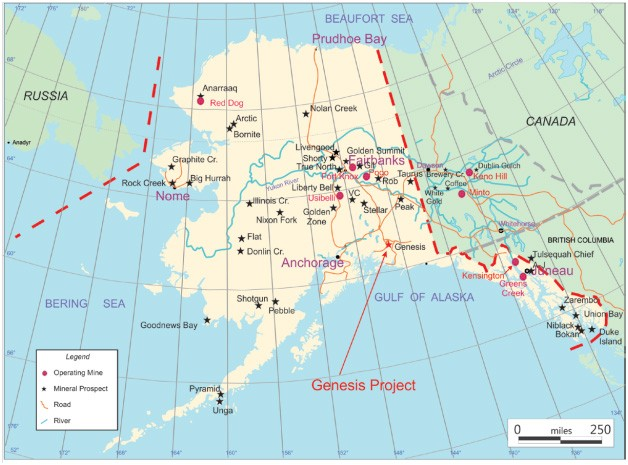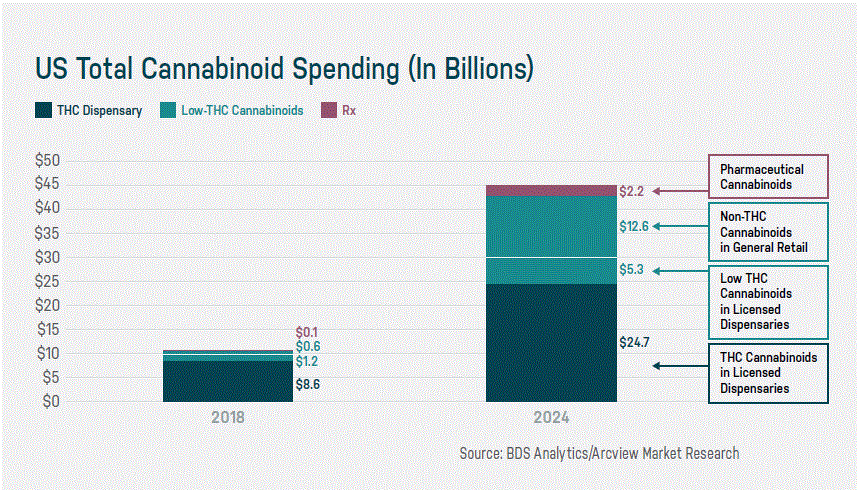
- The Genesis PGM Project is a road accessible, under explored, highly prospective multi-prospect drill ready Pd-Pt-Ni-Cu property that warrants initial drilling, additional surface mapping, sampling to expand the known footprint of mineralization and to determine the ultimate size and grade of the layered mineralization outlined to date.
- A 3-phase summer work program has been initiated on the project which is intended to map potential hydrothermal alteration anomalies and define structural domains to better define drill targets on the Project.
- A mineralized horizon has been identified in outcrop sampling for 850 m along strike and a 40 m true thickness. (for more information please click to the April 18, 2018 news release).
- The identification of two different styles of PGM/ Multi-Element mineralization at Sheep Hill suggests that multiple mineralizing events have occurred.
- NAM management is actively seeking an option/joint-venture partner for this road accessible PGM/Multiple Element Project using the Prospector Generator business model.
July 25th, 2019 – Rockport, Canada – New Age Metals Inc. (TSXV:NAM) (OTC:NMTLF) (FSE:P7J) is pleased to announce it has engaged Avalon Development Corp (Avalon) of Alaska, USA to carry out a field work program on its Genesis PGM-Ni-Cu Project in Alaska.
Genesis Project Summer 2019 Field Program
The summer 2019 field program on Genesis is intended to map hydrothermal alteration to better define drill targets on the Project and will be comprised of 3 phases of work; ASTER Imaging and Interpretation, Landsat TM Imagery Processing and Interpretation and ground induced polarization, Airborne Magnetics and EM Reinterpretation. A detailed description of each phase of work follows:
Phase 1: ASTER Imaging and Interpretation
The main objective of the ASTER (Advanced Spaceborne Thermal Emission and Reflection Radiometer) processing and interpretation is to map potential alteration targets to aid district-scale PGM-Cu-Ni sulfide exploration. The end goal of this phase is to generate 3 false color images: a 15-meter false-color image composed of three VNIR bands, a 30-meter false-color image composed of three SWIR bands, and a 90-meter false-color image composed of three TIR bands. Each false-color image is designed to enhance the alteration targets so they show up distinctively as color anomalies.
Phase 2: Landsat TM Imagery Processing and Interpretation
Interpret potential general clay alteration targets and potential iron-oxide alteration targets to generate a 30-meter true-color image to aid visual interpretation of the iron-oxide targets.
Phase 3: Airborne Magnetics and EM Reinterpretation
1. Reprocess existing State of Alaska airborne magnetic data in 2D and 3D formats to outline chromite-bearing PGM accumulations and identify structural domains.
2. Reprocess existing State of Alaska airborne EM data in 2D and 3D formats to outline PGM-Cu-Ni sulfide conductors and identify structural domains.
3. Reprocessing of a limited ground IP program completed over the Sheep Hill prospect area to better define strucutural details and target PGM-Cu-Ni sulfide-bearing horizons.
Merits of the Genesis PGM Project
The Genesis PGM Project is an under explored, highly prospective multi-prospect drill ready Pd-Pt-Ni-Cu property that warrants follow-up drilling, additional surface mapping, sampling to expand the known footprint of mineralization and to determine the ultimate size and grade of the layered mineralization outlined to date. The stable land status, ease of access and superb infrastructure make this project prospective for year-around exploration, development and production.
Significant aspects of the Genesis PGM Project include:
- – Drill ready PGM-Ni-Cu reef style target with 2.4 grams/ton Palladium (Pd), 2.4 grams/ton Platinum (Pt), 0.96% Nickle (Ni), and 0.58% Copper (Cu). – Reef mineralization is open to the west, east, north, and at depth – Mineralized reef identified in outcrop for 850 m along strike and a 40 m true thickness – Separate style of chromite mineralization contains Platinum Group Metals (PGM) up to 2.5 g/t Pd and 2.8 g/t Pt. – Known PGM mineralization covers a distance of 9 km across the prospect. – No historic drilling has been done on the project. – Project is within 3 km of a paved highway and electric transmission line. – Project is on stable State of Alaska claims. – Fraser Institute’s 2017 survey of mining companies has Alaska ranked as the 10th best jurisdiction in the world for mining.

Click Image To View Full Size
Figure 1: Location of the Genesis Project, Nelchina Mining
District, Alaska. The Genesis project is a Ni-Cu-PGM property located
in the northeastern Chugach Mountains, 75 road miles north of the city
of Valdez, Alaska. The project is within 3 km of the all-season paved Richardson Highway and a high capacity electric power line. The project is covered by 4,144 hectares (10,240 acres) of State of Alaska mining claims owned 100% by New Age Metals.
ABOUT NAM’S PGM DIVISION
NAM’s flagship project is its 100% owned River Valley PGM Project (NAM Website – River Valley Project) in the Sudbury Mining District of Northern Ontario (100 km east of Sudbury, Ontario). Recently the company announced the results of the first PEA (see News Release – June 27th, 2019) completed on the River Valley Project. The PEA has been developed by various independent consultants – P&E Mining Consultants Inc. (P&E) was responsible for the open pit mining, surface infrastructure, tailings facility, and project economics; DRA Americas Inc. (“DRA”) was responsible for all metallurgical test work and processing aspects of the Project; and WSP Canada Inc. (“WSP”) was responsible for the Mineral Resource Estimate. The PEA is a preliminary report but it has demonstrated that there are positive economics for a large-scale mining open pit operation, with 14 years of Palladium and Platinum production.
On April 4th, 2018, NAM signed an agreement with one of Alaska’s top geological consulting companies. The companies stated objective is to acquire additional PGM and Rare Metal projects in Alaska. On April 18th, 2018, NAM announced the right to purchase 100% of the Genesis PGM Project, NAM’s first Alaskan PGM acquisition related to the April 4th agreement. The Genesis PGM Project is a road accessible, under explored, highly prospective, multi-prospect drill ready Palladium (Pd)- Platinum (Pt)- Nickel (Ni)- Copper (Cu) property. A comprehensive report on previous exploration and future phases of work was completed by Avalon Development of Fairbanks Alaska in August 2018 on Genesis.
On August 29, the Avalon report was submitted to NAM, management is actively seeking an option/joint-venture partner for this road accessible PGM and Multiple Element Project using the Prospector Generator business model.
QUALIFIED PERSON
The contents contained herein that relate to Exploration Results or Mineral Resources is based on information compiled, reviewed or prepared by Curt Freeman, a consulting geoscientist for New Age Metals. Mr. Freeman is the Qualified Person as defined by National Instrument 43-101 and is the owner of Avalon Development Corp. and Anglo Alaska Gold Corp, which is the vendor of the Genesis PGM Project. Mr. Freeman has reviewed and approved the technical content of this news release.
On behalf of the Board of Directors
“Harry Barr”
Harry G. Barr
Chairman and CEO
Neither the TSX Venture Exchange nor its Regulation Services Provider (as that term is defined in the policies of the TSX Venture Exchange) accepts responsibility for the adequacy or accuracy of this release.
Cautionary Note Regarding Forward Looking Statements: This release contains forward-looking statements that involve risks and uncertainties. These statements may differ materially from actual future events or results and are based on current expectations or beliefs. For this purpose, statements of historical fact may be deemed to be forward-looking statements. In addition, forward-looking statements include statements in which the Company uses words such as “continue”, “efforts”, “expect”, “believe”, “anticipate”, “confident”, “intend”, “strategy”, “plan”, “will”, “estimate”, “project”, “goal”, “target”, “prospects”, “optimistic” or similar expressions. These statements by their nature involve risks and uncertainties, and actual results may differ materially depending on a variety of important factors, including, among others, the Company’s ability and continuation of efforts to timely and completely make available adequate current public information, additional or different regulatory and legal requirements and restrictions that may be imposed, and other factors as may be discussed in the documents filed by the Company on SEDAR (www.sedar.com), including the most recent reports that identify important risk factors that could cause actual results to differ from those contained in the forward-looking statements. The Company does not undertake any obligation to review or confirm analysts’ expectations or estimates or to release publicly any revisions to any forward-looking statements to reflect events or circumstances after the date hereof or to reflect the occurrence of unanticipated events. Investors should not place undue reliance on forward-looking statements.



















